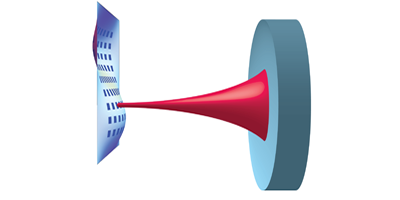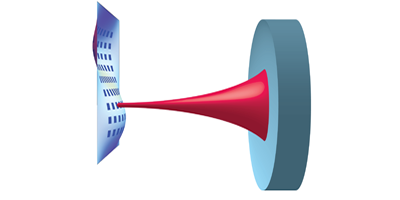Competing for Advantage in a Phonon Laser
Within the past decade, researchers have started to make phonon lasers, also called “sasers” (sound amplification by stimulated emission of acoustic radiation) in analogy with lasers that emit photons. In conventional lasers, mode competition is important: while the laser cavity can, in principle, sustain different oscillation modes, one mode can steal gain from the others and become dominant. Controlling this competition is useful in obtaining single-mode emission with precisely defined frequency and spatial characteristics. As reported in Physical Review Letters, researchers in the group of John Lawall, National Institute of Standards and Technology (NIST), Gaithersburg, Maryland, have studied and controlled mode competition in a saser.
The NIST team built a phonon laser consisting of a resonant optical cavity in which one of the mirrors is a reflective membrane that can support the oscillation of a large set of mechanical modes. A laser pumps the cavity and the circulating light is coupled to the membrane’s mechanical degrees of freedom by radiation pressure. This, in turn, provides the phonon gain that leads to “sasing.” A probe laser monitors the displacement of the membrane, indicating which modes are oscillating.
Just as in a photon laser, the saser exhibits mode competition. All of the modes initially experience gain, and those for which the gain exceeds the losses start to oscillate. At low pump power, there is only one such mode, but at higher pump power, multiple modes start to oscillate and compete for the available optically furnished gain. Eventually, one mode emerges victorious, suppressing oscillation in the other modes. The pump power provides a mode-selection knob; by controlling the relative gains of the various modes, different modes can be selected to prevail, and the sasing frequency can be determined in advance. The ability to select individual modes may move these devices closer to applications. – David Voss





